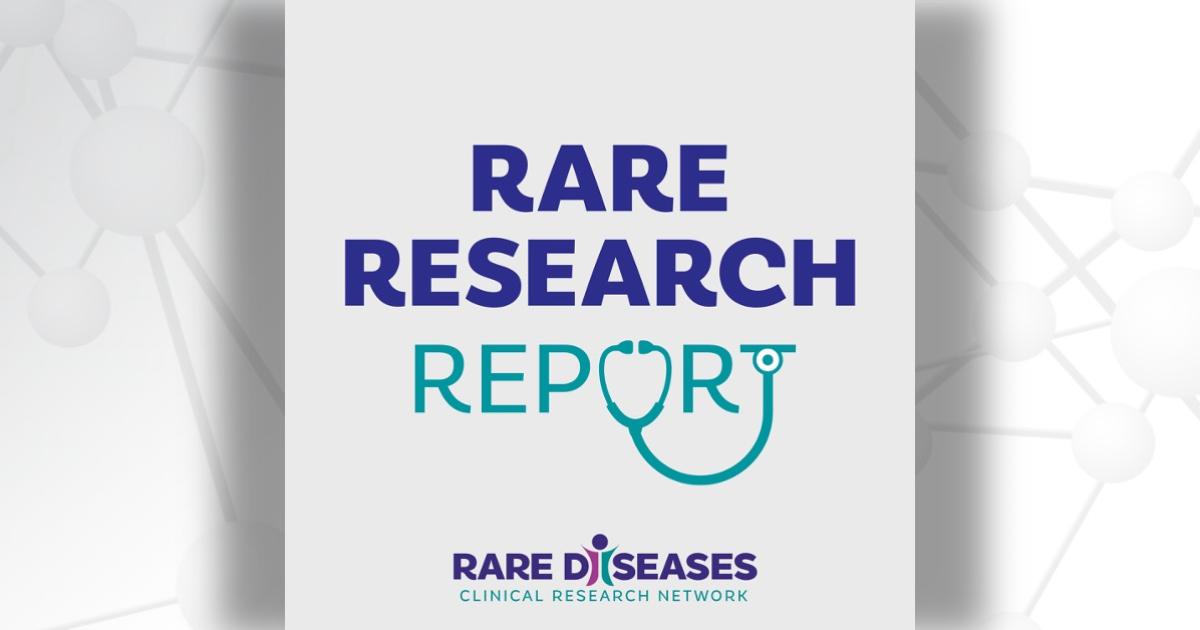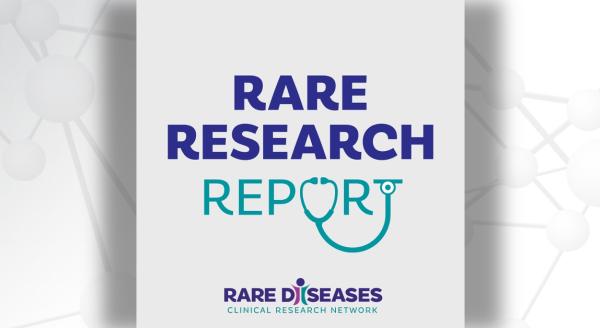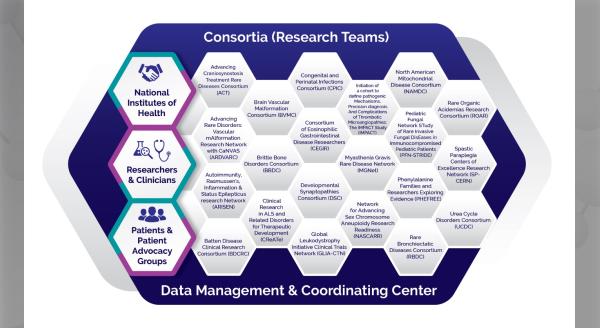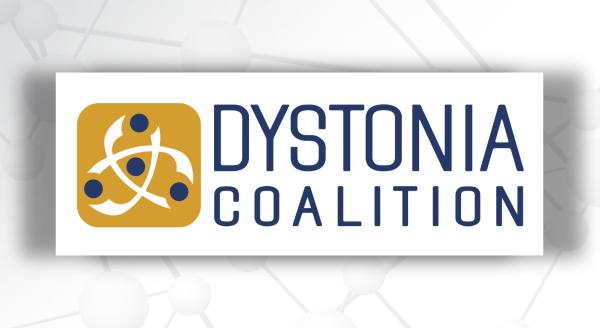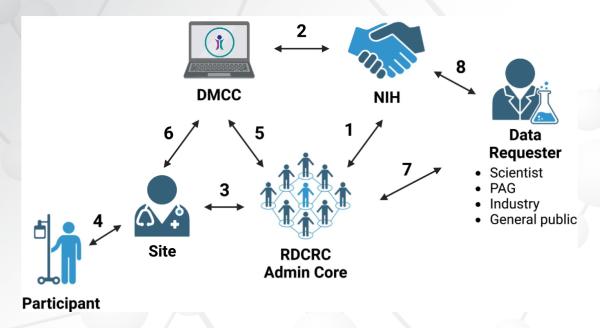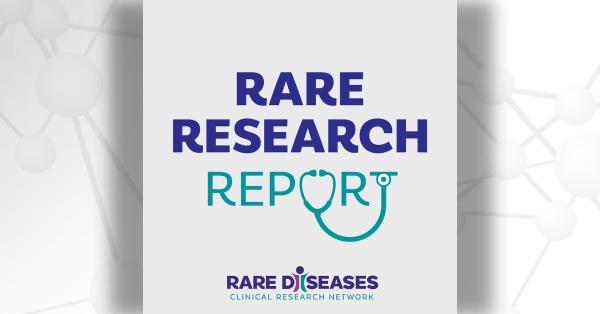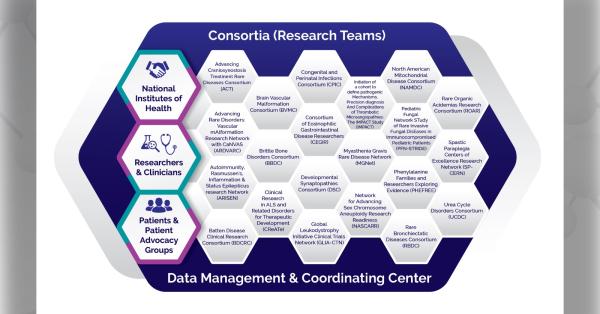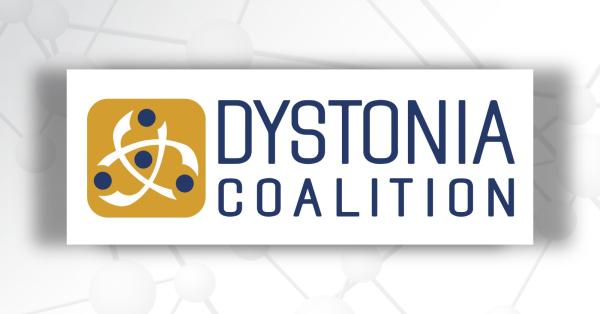Each month, we share summaries of recent Rare Diseases Clinical Research Network (RDCRN) grant-funded publications. Catch up on the latest RDCRN research below.
Jump to:
- Global Leukodystrophy Initiative Clinical Trials Network (GLIA-CTN)
- Myasthenia Gravis Rare Disease Network (MGNet)
Listen to these summaries on the Rare Research Report podcast.
Global Leukodystrophy Initiative Clinical Trials Network (GLIA-CTN)
Discovering a New Pathogenic Variant in Canavan Disease
Canavan disease is a progressive type of leukodystrophy caused by variants in the ASPA gene. In patients with Canavan disease, increased levels of N-acetylaspartic acid lead to symptoms including developmental delay, abnormal muscle tone, and macrocephaly (larger than typical head size). In order for patients to receive a complete diagnosis, all pathogenic variants in the ASPA gene must be identified.
In this study, researchers discovered a new pathogenic variant in Canavan disease. First, the team identified five patients with a clinical and biochemical diagnosis of Canavan disease, but no second pathogenic variant. Next, they used the gene editing tool CRISPR-Cas9 and long-read sequencing technique to analyze the gene structure of ASPA in these patients.
Results revealed a previously unidentified variant of the ASPA gene involving the insertion of an SVA_E retrotransposon into intron 4 of the ASPA gene. Authors note that these findings can improve genetic counseling for families and increase access to gene therapy trials.
Weiß M, Selig M, Friedrich J, Wierczeiko A, Diederich S, Sigel H, Bredow J, Eichler FS, Nagy A, Seyler D, Holthöfer L, Gerber S, Schweiger S, Linke M, Bley A. Deep Intronic SVA_E Retrotransposition as a Novel Factor in Canavan Disease Pathogenesis. Hum Gene Ther. 2025 Sep;36(17-18):1248-1256. doi: 10.1089/hum.2025.006. Epub 2025 Apr 21. PMID: 40257001.
Myasthenia Gravis Rare Disease Network (MGNet)
Comparing Differences in Proteins Among Patients with Early-Onset and Late-Onset Myasthenia Gravis
Myasthenia gravis (MG) is a neuromuscular disorder caused by an autoimmune response which blocks or damages acetylcholine receptors in muscles, causing disabling weakness. Patients with early-onset MG develop symptoms before age 50, while patients with late-onset MG develop symptoms after age 50. Not much is known about how early-onset and late-onset MG affect the body differently.
Utilizing sera (the liquid part of blood that remains after coagulation) from the NIH-sponsored BeatMG clinical trial and MGNet, researchers performed proteomics analysis of 768 inflammatory proteins and uncovered a distinct immunological signature that differentiates late-onset from early-onset myasthenia gravis.
Pathways linked to leukocyte differentiation and myeloid cell migration were enriched in late-onset disease. Seven proteins were further replicated in the UK Biobank, and IL18R1, CXCL17, and CCL11 were validated in an independent cohort that were specific to late-onset MG. Investigators note that further studies are needed to confirm the use of these proteins as biomarkers of late-onset MG, as well as their use for improving therapeutic precision and patient outcomes.
Roy B, Chen J, Khani-Habibabadi F, McLaren N, Soliven BC, Juel VC, O'Connor KC, Nowak RJ, Kusner LL, Kaminski HJ. A Distinct Immunological Signature in Late-Onset Myasthenia Gravis: Insights from an Exploratory Proteomics Study. Ann Neurol. 2025 Sep 6. doi: 10.1002/ana.78017. Epub ahead of print. PMID: 40913424.
The Rare Diseases Clinical Research Network (RDCRN) is funded by the National Institutes of Health (NIH) and led by the National Center for Advancing Translational Sciences (NCATS) through its Division of Rare Diseases Research Innovation (DRDRI). Now in its fifth five-year funding cycle, RDCRN is a partnership with funding and programmatic support provided by Institutes, Centers, and Offices across NIH, including the National Institute of Neurological Disorders and Stroke, the National Institute of Allergy and Infectious Diseases, the National Institute of Diabetes and Digestive and Kidney Diseases, the Eunice Kennedy Shriver National Institute of Child Health and Human Development, the National Institute of Arthritis and Musculoskeletal and Skin Diseases, the National Heart, Lung, and Blood Institute, the National Institute of Dental and Craniofacial Research, the National Institute of Mental Health, and the Office of Dietary Supplements.

